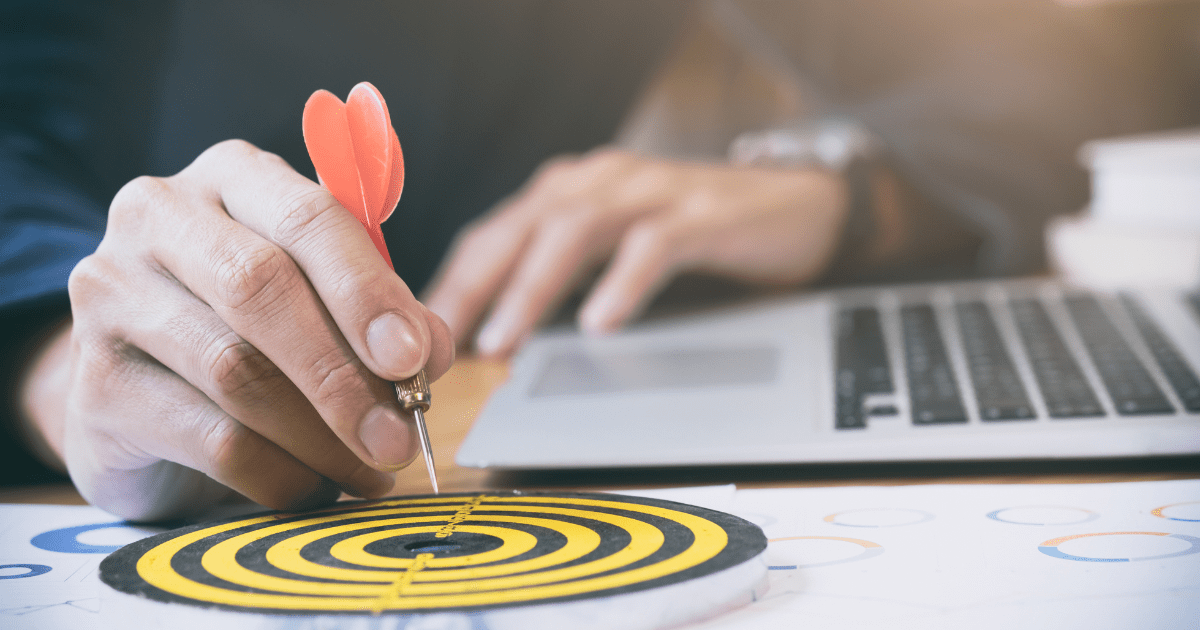Social Anxiety Treatment Goals: Complete Guide to Measuring Progress and Recovery
Learn how to set effective, measurable treatment goals for social anxiety disorder using evidence-based frameworks and real-world examples from successful therapy outcomes.
Understanding Social Anxiety Treatment Goals: The Foundation of Recovery
Treatment goals for social anxiety are specific, measurable objectives designed to systematically address the core components of social anxiety disorder: cognitive distortions, avoidance behaviors, and functional impairment. Unlike vague aspirations to “be less shy” or “feel more confident,” effective treatment goals provide clear direction for therapy and concrete ways to measure progress toward recovery.
Why structured treatment goals are essential:
- Clear direction for both therapist and client throughout the treatment process
- Measurable progress tracking using standardized assessments and behavioral indicators
- Motivation maintenance through celebrating achievable milestones and victories
- Treatment customization based on individual symptoms, triggers, and life circumstances
- Evidence-based outcomes that demonstrate the effectiveness of therapeutic interventions
The Science Behind Goal-Setting in Social Anxiety Treatment
Research consistently shows that structured goal-setting significantly improves treatment outcomes for social anxiety disorder. Studies indicate that clients who work with clearly defined, measurable goals show:
- 70-80% greater improvement in symptom reduction compared to unstructured treatment
- Higher treatment completion rates and better engagement with therapeutic homework
- Sustained improvements at 6-month and 12-month follow-up assessments
- Increased self-efficacy and confidence in managing anxiety symptoms independently
- Better generalization of skills learned in therapy to real-world situations
The SMART Framework for Social Anxiety Treatment Goals
Effective social anxiety treatment goals follow the SMART criteria, ensuring that objectives are both achievable and measurable:
S – Specific and Clear
Goals must clearly define what will be accomplished, avoiding vague or ambiguous language.
Vague goal: “Feel more comfortable in social situations”
SMART goal: “Attend weekly team meetings and contribute at least one comment or question during each meeting”
M – Measurable and Quantifiable
Progress must be trackable through objective measures such as frequency, duration, or intensity ratings.
Examples of measurable indicators:
- Frequency: “Three times per week,” “Once daily,” “75% of invitations”
- Duration: “For 30 minutes,” “Throughout the entire event,” “For one month”
- Rating scales: “SUDS anxiety rating below 40,” “Confidence rating above 70”
- Behavioral completion: “Without using safety behaviors,” “Without leaving early”
A – Achievable and Realistic
Goals should challenge the client while remaining within the realm of possibility given their current functioning level.
Considerations for achievability:
- Current symptom severity and baseline functioning level
- Individual circumstances including work, family, and social obligations
- Previous treatment experiences and what has been helpful or challenging
- Personal strengths and resources that can support goal achievement
- Timeline considerations for gradual progression and skill building
R – Relevant and Meaningful
Goals must align with the client’s personal values, life circumstances, and reasons for seeking treatment.
Relevance factors:
- Personal values – what matters most to the individual
- Life stage – age-appropriate and circumstance-appropriate goals
- Cultural considerations – goals that fit within cultural context and expectations
- Individual priorities – addressing the most impactful areas of impairment first
T – Time-Bound with Clear Deadlines
Every goal needs a specific timeframe for completion, creating urgency and allowing for progress evaluation.
Timeline considerations:
- Short-term goals: 2-4 weeks for immediate skill building
- Medium-term goals: 6-12 weeks for significant behavioral changes
- Long-term goals: 3-6 months for major life improvements and sustained change
Comprehensive Categories of Social Anxiety Treatment Goals
1. Cognitive Goals: Restructuring Anxious Thinking Patterns
Cognitive goals focus on identifying, challenging, and changing the thought patterns that fuel social anxiety. These goals target the mental aspects of anxiety that often precede and maintain avoidance behaviors.
Core Cognitive Targets
Automatic Negative Thoughts (ANTs): Social anxiety is characterized by rapid, often unconscious negative thoughts that occur in social situations. These thoughts typically involve predictions of social disaster, rejection, or humiliation.
Common ANT patterns in social anxiety:
- Mind reading: “Everyone thinks I’m boring/stupid/weird”
- Fortune telling: “I’ll definitely embarrass myself and everyone will remember”
- Catastrophizing: “If I mess up, my career/reputation will be ruined forever”
- All-or-nothing thinking: “Either I’m perfect or I’m a complete failure”
Example Cognitive Goals:
Goal 1: Automatic Thought Identification and Monitoring
- Objective: Client will identify and record automatic negative thoughts occurring in social situations using a thought log with 80% accuracy within 3 weeks
- Measurement: Weekly review of thought records with therapist assessment of accuracy and completeness
- Behavioral indicator: Completion of daily thought monitoring forms
Goal 2: Cognitive Restructuring and Balanced Thinking
- Objective: Client will challenge catastrophic predictions using evidence-based questioning and develop balanced alternative thoughts in 4 out of 5 social anxiety episodes within 6 weeks
- Measurement: Quality of thought challenging exercises and reported belief ratings in alternative thoughts
- Behavioral indicator: Spontaneous use of cognitive restructuring techniques outside of therapy
Goal 3: Reducing Fear of Negative Evaluation
- Objective: Client will decrease belief in fearful social predictions from baseline of 85% to 40% or below as measured by pre- and post-behavioral experiment ratings within 10 weeks
- Measurement: Belief ratings before and after exposure exercises using 0-100 scale
- Behavioral indicator: Willingness to engage in previously avoided situations
Advanced Cognitive Goals
Meta-Cognitive Awareness: Developing awareness of thinking patterns and the relationship between thoughts, emotions, and behaviors.
Goal: Thought-Emotion-Behavior Connection Recognition
- Objective: Client will accurately identify the connection between specific anxious thoughts, emotional responses, and resulting behaviors in 90% of social anxiety episodes within 8 weeks
- Measurement: Weekly tracking sheets and therapist review of client insights
- Behavioral indicator: Proactive thought monitoring before entering social situations
Self-Compassion Development: Replacing harsh self-criticism with kind, understanding self-talk.
Goal: Self-Compassionate Response Development
- Objective: Client will develop and use two specific self-compassionate statements following challenging social interactions, replacing previous self-critical responses, for 4 consecutive weeks
- Measurement: Self-report tracking of self-talk patterns and emotional impact
- Behavioral indicator: Decreased post-social-event rumination and faster emotional recovery
2. Behavioral Goals: Confronting Avoidance and Building Social Skills
Behavioral goals are the cornerstone of social anxiety treatment, focusing on systematically confronting avoided situations and eliminating safety behaviors. These goals are typically addressed through exposure therapy and behavioral activation techniques.
Exposure Therapy Goals
Hierarchical Exposure Planning: Creating a systematic approach to confronting feared situations from least to most anxiety-provoking.
Sample Fear Hierarchy for Workplace Social Anxiety:
- Level 1 (SUDS 20-30): Making eye contact with colleagues in hallways
- Level 2 (SUDS 30-40): Eating lunch in the office break room
- Level 3 (SUDS 40-50): Asking a colleague a work-related question
- Level 4 (SUDS 50-60): Contributing one comment during team meetings
- Level 5 (SUDS 60-70): Initiating casual conversation with coworkers
- Level 6 (SUDS 70-80): Attending voluntary office social events
- Level 7 (SUDS 80-90): Giving a presentation to the team
- Level 8 (SUDS 90-95): Leading a team meeting or training session
Example Behavioral Goals:
Goal 1: Systematic Exposure Completion
- Objective: Client will complete exposure exercises at Levels 1-3 of their fear hierarchy (workplace social interactions) with SUDS ratings decreasing by 50% from baseline within 6 weeks
- Measurement: Pre-, during, and post-exposure SUDS ratings recorded for each exercise
- Behavioral indicator: Consistent completion of assigned exposure homework
Goal 2: Safety Behavior Elimination
- Objective: Client will eliminate use of identified safety behaviors (phone checking, excessive preparation, avoiding eye contact) during exposure exercises, achieving 100% compliance within 8 weeks
- Measurement: Self-monitoring checklist and therapist observation during in-session exposures
- Behavioral indicator: Natural, authentic behavior during social interactions
Goal 3: Spontaneous Social Engagement
- Objective: Client will initiate three unplanned social interactions per week (greeting colleagues, making small talk, asking questions) without prior rehearsal within 10 weeks
- Measurement: Daily tracking log of spontaneous social interactions
- Behavioral indicator: Increased comfort with impromptu social situations
Social Skills Development Goals
Communication Skills Enhancement: Building specific skills that increase confidence and effectiveness in social interactions.
Goal: Assertive Communication Development
- Objective: Client will practice and implement assertive communication techniques (clear statements, appropriate eye contact, confident body language) in 5 different social situations within 12 weeks
- Measurement: Role-play practice ratings and real-world application tracking
- Behavioral indicator: Increased ability to express opinions and preferences in group settings
Goal: Conversation Skills Building
- Objective: Client will initiate and maintain conversations for 5+ minutes with unfamiliar people in social settings (parties, networking events, classes) twice weekly for 8 weeks
- Measurement: Conversation duration tracking and comfort ratings
- Behavioral indicator: Natural, flowing conversations without forced endings
Activity Participation Goals
Social Re-engagement: Systematically returning to previously avoided social activities and environments.
Goal: Group Activity Participation
- Objective: Client will join and regularly attend one group activity (fitness class, hobby group, volunteer organization) for at least 2 months, attending 80% of scheduled meetings
- Measurement: Attendance tracking and engagement quality ratings
- Behavioral indicator: Active participation rather than passive attendance
Goal: Professional Networking Engagement
- Objective: Client will attend two professional networking events within 4 months, staying for the full duration and initiating conversations with at least 3 new people at each event
- Measurement: Event attendance confirmation and conversation tracking
- Behavioral indicator: Business card exchanges and follow-up professional connections
3. Functional Goals: Improving Life Quality and Achievement
Functional goals address the broader life impact of social anxiety, focusing on areas where anxiety has limited personal growth, career advancement, relationship development, and overall life satisfaction.
Occupational and Career Goals
Professional Development: Addressing how social anxiety has impacted career progression and workplace relationships.
Goal: Leadership Opportunity Pursuit
- Objective: Client will apply for one leadership position or volunteer for a leadership role within their organization within 6 months of treatment
- Measurement: Application submission or volunteer role acceptance
- Behavioral indicator: Active participation in leadership activities and responsibilities
Goal: Workplace Presentation Skills
- Objective: Client will volunteer to give one work presentation per month, maintaining SUDS anxiety ratings below 50 throughout the presentation within 4 months
- Measurement: Presentation frequency tracking and anxiety rating monitoring
- Behavioral indicator: Confident, engaging presentation delivery
Goal: Professional Relationship Building
- Objective: Client will develop three meaningful workplace relationships involving regular communication and occasional social interaction outside of work within 8 months
- Measurement: Relationship quality assessment and interaction frequency tracking
- Behavioral indicator: Mutual professional support and social connection
Personal Relationship Goals
Friendship Development: Building and maintaining meaningful personal relationships.
Goal: Friend Group Expansion
- Objective: Client will develop two new friendships involving regular contact and shared activities within 6 months
- Measurement: Contact frequency tracking and activity participation
- Behavioral indicator: Mutual initiation of social plans and emotional support
Goal: Intimate Relationship Enhancement
- Objective: Client will improve communication and intimacy in romantic relationship by expressing feelings and needs directly rather than avoiding difficult conversations, achieving this in 4 out of 5 opportunities within 3 months
- Measurement: Communication quality tracking and relationship satisfaction ratings
- Behavioral indicator: Increased emotional openness and conflict resolution skills
Personal Growth and Life Satisfaction Goals
Hobby and Interest Pursuit: Engaging in personally meaningful activities that may involve social interaction.
Goal: Creative or Athletic Pursuit
- Objective: Client will enroll in and complete one class or program involving their personal interests (art, music, sports, etc.) that includes social interaction components within 4 months
- Measurement: Enrollment confirmation, attendance tracking, and completion certificate
- Behavioral indicator: Enjoyment and skill development in chosen activity
Goal: Community Involvement
- Objective: Client will volunteer for a cause they care about, committing to 4 hours per month for 6 months and building connections with fellow volunteers
- Measurement: Volunteer hour tracking and social connection development
- Behavioral indicator: Sense of purpose and community belonging
Independence and Life Skills Goals
Daily Life Confidence: Addressing practical life situations that anxiety has made difficult.
Goal: Service Interaction Confidence
- Objective: Client will handle all necessary service interactions (medical appointments, customer service calls, store returns) independently without avoidance within 2 months
- Measurement: Tracking of avoided vs. completed necessary interactions
- Behavioral indicator: Proactive handling of practical life needs
Goal: Advocacy and Self-Representation
- Objective: Client will effectively advocate for themselves in appropriate situations (workplace issues, service problems, relationship concerns) within 6 months
- Measurement: Self-advocacy instances tracking and outcome assessment
- Behavioral indicator: Increased self-confidence and problem-solving effectiveness
Comprehensive Progress Measurement Strategies
Standardized Assessment Tools
Liebowitz Social Anxiety Scale (LSAS): The gold standard for measuring social anxiety severity and treatment progress.
Administration schedule:
- Baseline: Before treatment begins
- Mid-treatment: At 6-8 weeks
- Post-treatment: At treatment completion
- Follow-up: 3 and 6 months after treatment
Score interpretation:
- 55-65: Moderate social anxiety
- 65-80: Marked social anxiety
- 80-95: Severe social anxiety
- 95+: Very severe social anxiety
Treatment success indicators:
- 50% reduction in total LSAS score indicates significant improvement
- Score below 55 indicates subclinical social anxiety levels
Social Phobia Inventory (SPIN): A brief, 17-item assessment focusing on fear, avoidance, and physiological symptoms.
Social Interaction Anxiety Scale (SIAS) and Social Phobia Scale (SPS): Separate measures for interaction anxiety and performance anxiety components.
Session-by-Session Progress Monitoring
Subjective Units of Distress (SUDS) Tracking: Real-time anxiety measurement during exposure exercises and challenging situations.
SUDS implementation:
- Pre-exposure: Anxiety rating before entering feared situation
- Peak anxiety: Highest anxiety level during exposure
- Post-exposure: Anxiety level at end of exercise
- Recovery time: How quickly anxiety returns to baseline
Progress indicators:
- Decreasing peak anxiety over repeated exposures
- Faster habituation within individual exposure sessions
- Reduced anticipatory anxiety before planned exposures
- Shorter recovery time after challenging social situations
Behavioral Completion Tracking: Objective measurement of goal-related behaviors and exposure completion.
Tracking methods:
- Exposure homework logs: Completion rate and quality assessment
- Daily behavior monitoring: Frequency of target behaviors
- Weekly goal review: Progress toward specific objectives
- Milestone celebrations: Recognition of achieved goals
Functional Improvement Measures
Work and Academic Performance: Objective indicators of improved functioning in professional or educational settings.
Workplace measures:
- Meeting participation: Frequency and quality of contributions
- Presentation delivery: Number and quality of presentations given
- Professional networking: New professional relationships developed
- Career advancement: Applications, promotions, or new opportunities pursued
Quality of Life Assessment: Broader measures of life satisfaction and functioning.
Assessment areas:
- Social relationship quality: Number and depth of friendships
- Activity participation: Engagement in enjoyable social activities
- Life satisfaction: Overall happiness and fulfillment ratings
- Self-efficacy: Confidence in handling social situations
Family and Relationship Impact: Measuring improvement in personal relationships and family functioning.
Relationship indicators:
- Communication quality: Openness and effectiveness in relationships
- Conflict resolution: Ability to address and resolve disagreements
- Intimacy levels: Emotional and physical closeness in romantic relationships
- Family participation: Engagement in family activities and events
Common Challenges in Goal Setting and Solutions
Overly Ambitious Goals
Problem: Setting goals that are too large or unrealistic for current functioning level.
Example of problematic goal: “Give a 30-minute presentation to 100 people within 4 weeks” (for someone who currently avoids all group interactions)
Solution strategies:
- Break large goals into smaller steps: Create a hierarchy of increasingly challenging exposures
- Assess current baseline: Understand current capabilities before setting next-level goals
- Gradual progression: Allow sufficient time for skill building and confidence development
- Regular goal review: Adjust goals based on actual progress and challenges encountered
Revised goal example: “Make one comment during weekly team meetings (5-8 people) within 6 weeks”
Vague or Unmeasurable Goals
Problem: Goals that cannot be objectively assessed or tracked.
Example of problematic goal: “Feel more confident in social situations”
Solution strategies:
- Specify exact behaviors: Define what “confidence” looks like in behavioral terms
- Add measurable criteria: Include frequency, duration, or quality measures
- Use objective indicators: Focus on observable actions rather than internal feelings
- Create tracking methods: Develop specific ways to monitor progress
Revised goal example: “Initiate conversations with two new people per week, maintaining eye contact and speaking for at least 3 minutes each”
Goals Not Aligned with Client Values
Problem: Pursuing goals that don’t match the client’s personal priorities or life circumstances.
Example of problematic goal: Focusing on party attendance for someone who values quiet, intimate gatherings
Solution strategies:
- Values clarification: Explore what truly matters to the client
- Personal relevance: Ensure goals connect to client’s life priorities
- Cultural sensitivity: Consider cultural background and expectations
- Individual preferences: Respect introverted tendencies while addressing anxiety
Revised goal example: “Host small dinner parties for 3-4 close friends twice monthly” instead of attending large social events
Insufficient Challenge Level
Problem: Goals that are too easy and don’t promote meaningful growth.
Example of problematic goal: “Say hello to one familiar person per week” (for someone capable of much more)
Solution strategies:
- Regular assessment: Continuously evaluate current capacity and adjust accordingly
- Progressive difficulty: Gradually increase challenge level as skills improve
- Client feedback: Ask about goal difficulty and motivation level
- Therapist observation: Monitor engagement and progress rate
Revised goal example: “Initiate lunch plans with different colleagues weekly and attend two department social events monthly”
Treatment Goal Customization for Different Populations
Age-Specific Goal Adaptations
Adolescent Treatment Goals: Teen-focused objectives addressing school, peer relationships, and identity development.
Academic environment goals:
- Classroom participation: Asking questions and contributing to discussions
- Extracurricular involvement: Joining clubs, sports, or activities
- Peer relationship building: Developing friendships and social connections
- Identity exploration: Trying new activities and expressing personal interests
Example adolescent goal: “Join one school club or activity and attend regularly for one semester, participating actively in group discussions and activities”
Adult Treatment Goals: Professional and life-stage appropriate objectives addressing career, relationships, and responsibilities.
Career-focused goals:
- Professional networking: Building industry connections and relationships
- Leadership development: Taking on supervisory or mentoring roles
- Public speaking: Presenting at conferences or leading meetings
- Team collaboration: Effective participation in workplace teams
Example adult goal: “Attend monthly professional association meetings for 6 months, introducing yourself to 3 new people at each meeting and following up with 2 meaningful professional connections”
Older Adult Treatment Goals: Age-appropriate objectives focusing on social connection, community involvement, and adaptation to life changes.
Community engagement goals:
- Volunteer participation: Contributing to meaningful causes
- Social group involvement: Joining senior centers or hobby groups
- Family relationship enhancement: Improving connections with adult children and grandchildren
- New learning pursuits: Taking classes or learning new skills
Example older adult goal: “Join a community volunteer organization and commit to 4 hours per week for 6 months, building friendships with fellow volunteers”
Severity-Based Goal Customization
Mild Social Anxiety Goals: Objectives for individuals with limited functional impairment who want to enhance social confidence.
Enhancement-focused goals:
- Social skill refinement: Improving existing social capabilities
- Opportunity expansion: Pursuing previously avoided growth opportunities
- Confidence building: Developing greater social self-assurance
- Performance optimization: Enhancing public speaking or presentation skills
Moderate Social Anxiety Goals: Objectives addressing significant functional limitations while building toward normal social participation.
Restoration-focused goals:
- Activity re-engagement: Returning to previously enjoyed social activities
- Relationship repair: Rebuilding connections affected by social withdrawal
- Workplace integration: Improving professional social functioning
- Graduated exposure: Systematic confrontation of feared situations
Severe Social Anxiety Goals: Objectives for individuals with substantial impairment requiring careful, gradual progression.
Foundation-building goals:
- Basic social tolerance: Developing ability to be around others without severe distress
- Safety behavior reduction: Eliminating reliance on avoidance and protective behaviors
- Functional restoration: Addressing basic life functioning affected by anxiety
- Support system development: Building therapeutic relationships and minimal social connections
Comorbidity Considerations
Social Anxiety with Depression: Integrated goals addressing both mood and anxiety symptoms.
Dual-target goals:
- Activity scheduling: Planning enjoyable and mastery-oriented social activities
- Cognitive restructuring: Addressing both anxious and depressive thought patterns
- Behavioral activation: Increasing overall activity level including social engagement
- Support system building: Developing relationships that provide emotional support
Social Anxiety with ADHD: Goals that accommodate attention and executive functioning challenges.
ADHD-adapted goals:
- Structure and routine: Creating predictable social engagement patterns
- Skill practice: Repeated rehearsal of social skills with ADHD-friendly methods
- Environmental modification: Choosing social settings that minimize ADHD-related challenges
- Strength utilization: Leveraging ADHD strengths like creativity and spontaneity
Social Anxiety with Autism Spectrum Conditions: Goals that respect neurodivergent social preferences while addressing anxiety.
Neurodivergent-affirming goals:
- Social comfort zones: Identifying and expanding comfortable social environments
- Communication preferences: Developing skills that match individual communication styles
- Sensory considerations: Addressing sensory aspects of social environments
- Special interest integration: Using special interests as bridges to social connection
Long-Term Maintenance and Relapse Prevention Goals
Skill Maintenance Objectives
Ongoing Practice Goals: Ensuring continued use of therapeutic skills after formal treatment ends.
Maintenance strategies:
- Regular exposure schedule: Continued engagement in previously feared situations
- Skill practice routine: Weekly practice of cognitive restructuring and social skills
- Challenge seeking: Periodically taking on new social challenges to prevent avoidance return
- Self-monitoring: Ongoing tracking of social anxiety symptoms and functioning
Example maintenance goal: “Complete one challenging social activity monthly and practice cognitive restructuring techniques weekly for 12 months post-treatment”
Growth and Development Goals
Continued expansion objectives: Building on treatment gains to pursue new areas of growth and development.
Post-treatment growth:
- Leadership development: Taking on increasingly responsible social roles
- Mentoring others: Helping others with similar struggles
- Advocacy involvement: Contributing to social anxiety awareness and support
- Life goal pursuit: Using improved social confidence to pursue personal dreams
Example growth goal: “Within 2 years post-treatment, take on a leadership role in professional organization and mentor one person struggling with social anxiety”
Setback Management Goals
Resilience building objectives: Developing capacity to handle temporary increases in social anxiety without complete relapse.
Setback management strategies:
- Early warning recognition: Identifying signs of increasing avoidance or anxiety
- Rapid intervention: Having specific plans for addressing temporary setbacks
- Support system utilization: Knowing when and how to seek additional help
- Perspective maintenance: Understanding that temporary increases in anxiety are normal
Example setback management goal: “Develop and implement a personal action plan for managing anxiety increases, including specific coping strategies and criteria for seeking additional support”
Conclusion: Your Roadmap to Social Freedom
Effective treatment goals serve as the compass for your journey from social anxiety to social confidence. They transform the overwhelming challenge of “overcoming social anxiety” into manageable, achievable steps that build upon each other toward meaningful life change.
Key principles for successful goal setting:
Collaboration is essential: The most effective goals are developed together with your therapist, ensuring they match your values, circumstances, and readiness for change.
Specificity drives success: Clear, measurable goals provide direction and allow you to see concrete evidence of your progress.
Gradual progression works: Small, achievable steps build confidence and skills necessary for bigger challenges.
Individual customization matters: Your goals should reflect your unique situation, age, culture, and personal priorities.
Measurement motivates: Tracking progress through standardized assessments and behavioral indicators maintains motivation and demonstrates real change.
Flexibility enables adaptation: Goals should be adjusted based on progress, challenges, and changing circumstances.
Long-term perspective sustains change: Treatment goals are not just about symptom reduction but about building a fulfilling, socially connected life.
Remember that setbacks and challenges are normal parts of the recovery process. The goal is not to eliminate all social anxiety forever, but to reduce it to manageable levels that don’t interfere with living the life you want. With clear goals, consistent effort, and professional support, social anxiety doesn’t have to define the limits of your social world.
Your treatment goals are more than just therapy objectives—they’re stepping stones to the socially confident, connected life you deserve. Each goal achieved brings you closer to the freedom to be yourself in social situations, to pursue opportunities that matter to you, and to build the relationships that make life meaningful.
Important Note: This guide provides educational information about treatment goal setting but is not a substitute for professional mental health care. Working with a qualified therapist who specializes in social anxiety is essential for developing personalized, effective treatment goals and achieving lasting recovery.
Keywords: social anxiety treatment goals, therapy goals for social anxiety, measuring social anxiety progress, SMART goals for anxiety, social anxiety recovery plan, cognitive behavioral therapy goals, exposure therapy objectives, social anxiety treatment planning







